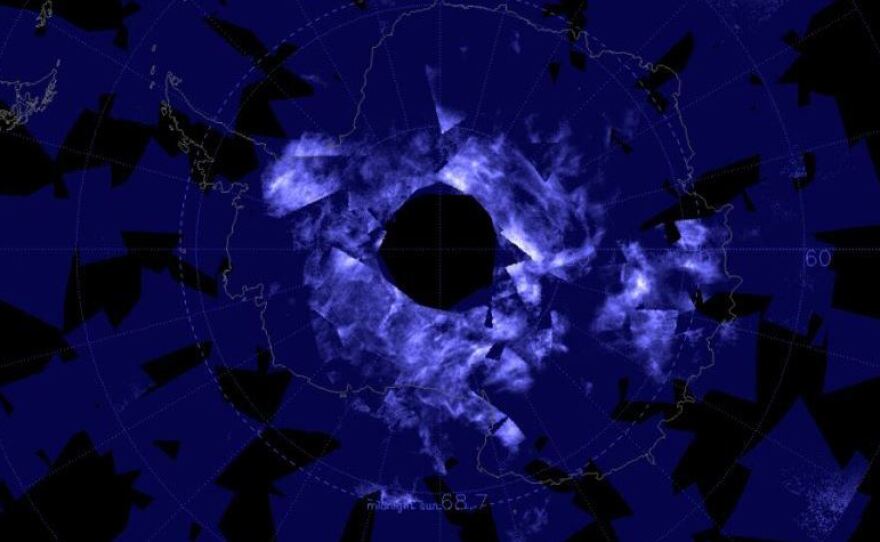
Each year, a glowing mass of clouds forms over the South Pole, high in the atmosphere, trapped between Earth and space.
From the ground they look wispy and shimmery, like a blue-white aurora borealis. From space, they look like an electric-blue gossamer haze.
Scientists call them noctilucent, or night-shining, clouds, and this year the noctilucent cloud season came early to the Southern Hemisphere. In the decade since NASA launched a satellite that can take images of the ice crystals that make up such clouds, the clouds have usually started showing up over the South Pole in late November or early December.
Composite satellite images posted on NASA's website today show Antarctica under noctilucent cloud cover beginning Nov. 17 this year, tying it with the earliest start measured.
The GIF above shows the clouds forming between Nov. 17 and Nov. 28, as captured by NASA's Aeronomy of Ice in the Mesosphere spacecraft, which studies how ice crystals form in the dry upper reaches of the Earth-space divide.
"Noctilucent clouds are a relatively new phenomenon," Gary Thomas, a professor at the University of Colorado, said in a NASA article about the spacecraft's mission shortly after it launched. "'They were first seen in 1885,' about two years after the powerful eruption of Krakatoa in Indonesia, which hurled plumes of ash as high as 80 km into Earth's atmosphere," the article continues.
But even after the ash dispersed, the clouds persisted.
Today's clouds come from space itself, "seeded by fine debris from disintegrating meteors," as NASA spokesperson Lina Tran explained on the agency's website.
Each day tiny bits of debris from comets and asteroids are swept into the upper reaches of Earth's atmosphere. Those bits of shooting stars could help "seed" the noctilucent clouds, by gathering moisture around the dust particle.
The clouds form when the upper parts of the atmosphere are coldest and wettest.
In both the Northern and Southern Hemispheres, the summer is when it's most humid "with water vapor wafting up from lower altitudes," and it is also, perhaps counterintuitively, when that part of the atmosphere "is the coldest place on earth — dropping as low as minus 210 Fahrenheit — due to seasonal air flow patterns," Tran writes.
For those hoping to see them from the Northern Hemisphere, they'll have to wait until next summer, but those who do not live in the Arctic are in luck.
"In recent years [noctilucent clouds] have intensified and spread," explained a 2013 NASA post about the science behind the clouds. "When noctilucent clouds first appeared in the 19th Century, you had to travel to polar regions to see them."
"Since the turn of the century, however, they have been sighted as close to the equator as Colorado and Utah."
Copyright 2016 NPR. To see more, visit http://www.npr.org/.






